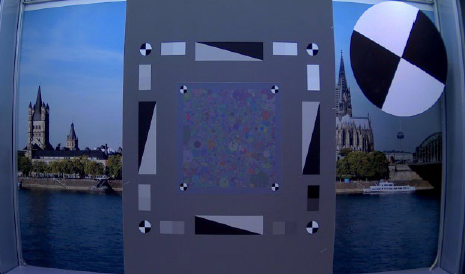
Noise Equivalent Quanta (NEQ) is an objective Fourier metric which evaluates the performance of an imaging system by detailing the effective equivalent quanta of an exposure versus spatial frequency. Calculated via the modulation transfer function (MTF) and noise power spectrum (NPS), it is a valuable precursor for ranking the detection capabilities of systems and a fundamental metric that combines sharpness and noise performance of an imaging system into a single curve in a physically meaningful way. The dead leaves measurement technique is able to provide an estimate of the MTF and NPS of an imaging system using a single target, and therefore a potentially convenient method for the assessment of NEQ. This work validates the use of the dead leaves technique to measure NEQ, firstly through simulation of an imaging system with known MTF and NPS, then via measurement of camera systems, both in the RAW domain and post-ISP. The dead leaves approach is shown to be a highly effective and practical method to estimate NEQ, ranking imaging systems performance both pre- and post-ISP.

The dead leaves pattern is very useful to obtain an SFR from a stochastic pattern and can be used to measure texture loss due to noise reduction or compression in images and video streams. In this paper, we present results from experiments that use the pattern and different analysis approaches to measure the dynamic range of a camera system as well as to describe the dependency of the SFR on object contrast and light intensity. The results can be used to improve the understanding of the performance of modern camera systems. These systems work adaptively and are scene aware but are not well described by standard image quality metrics.

Simulation is an established tool to develop and validate camera systems. The goal of autonomous driving is pushing simulation into a more important and fundamental role for safety, validation and coverage of billions of miles. Realistic camera models are moving more and more into focus, as simulations need to be more then photo-realistic, they need to be physical-realistic, representing the actual camera system onboard the self-driving vehicle in all relevant physical aspects – and this is not only true for cameras, but also for radar and lidar. But when the camera simulations are becoming more and more realistic, how is this realism tested? Actual, physical camera samples are tested in laboratories following norms like ISO12233, EMVA1288 or the developing P2020, with test charts like dead leaves, slanted edge or OECF-charts. In this article we propose to validate the realism of camera simulations by simulating the physical test bench setup, and then comparing the synthetical simulation result with physical results from the real-world test bench using the established normative metrics and KPIs. While this procedure is used sporadically in industrial settings we are not aware of a rigorous presentation of these ideas in the context of realistic camera models for autonomous driving. After the description of the process we give concrete examples for several different measurement setups using MTF and SFR, and show how these can be used to characterize the quality of different camera models.